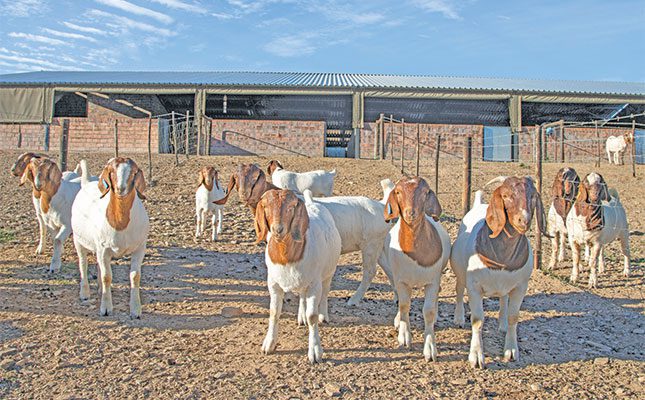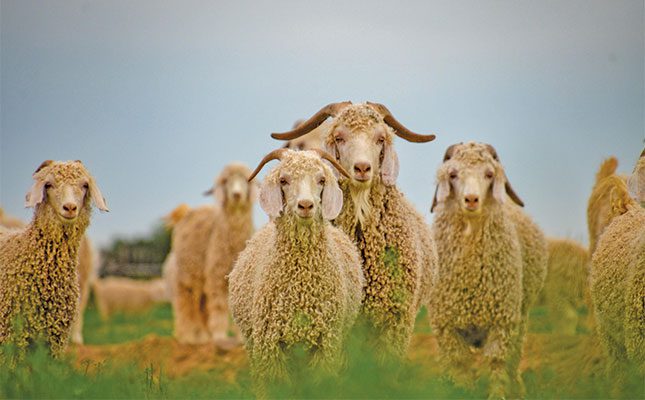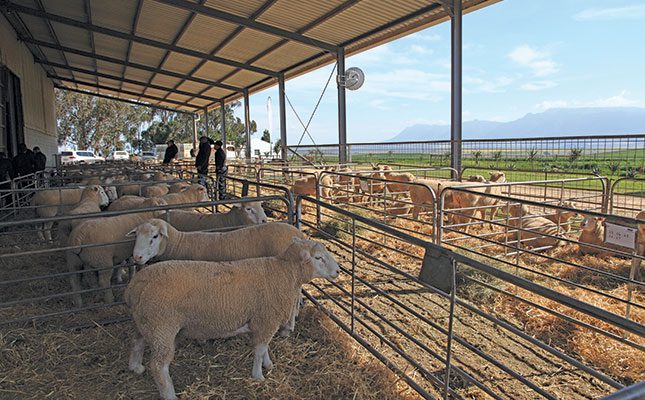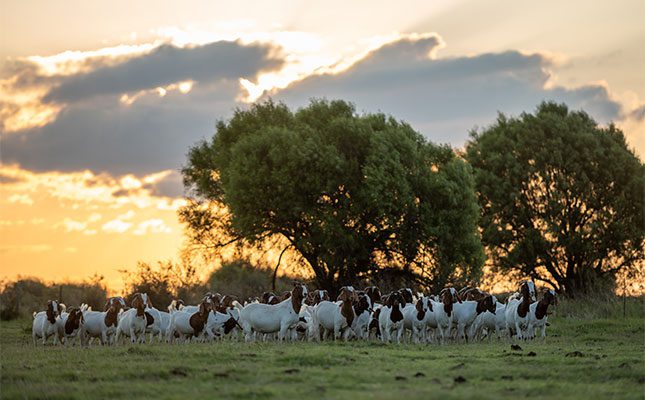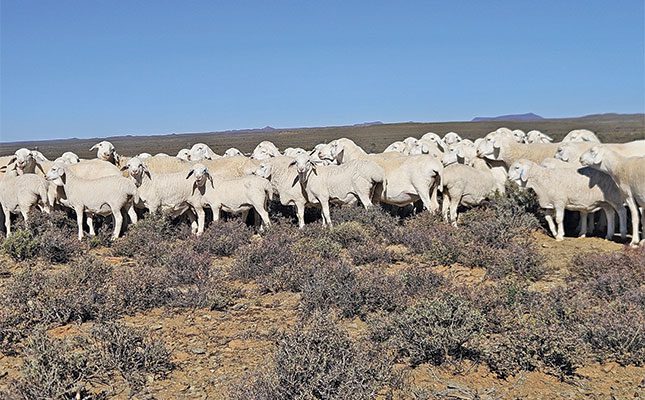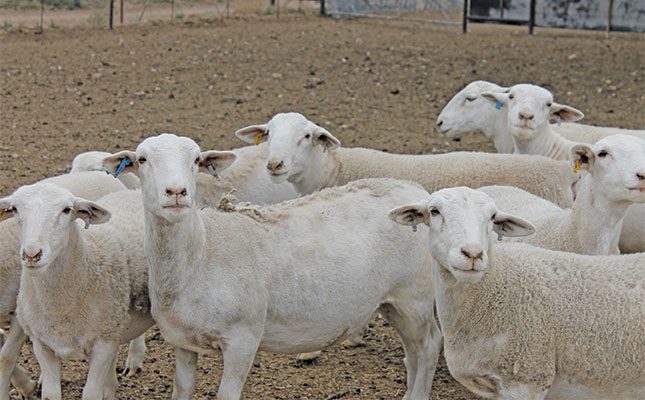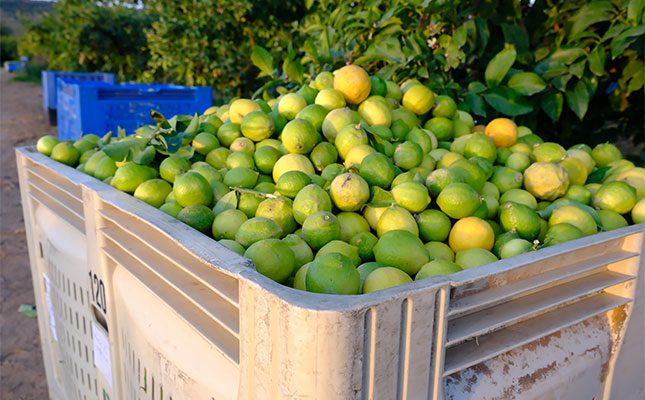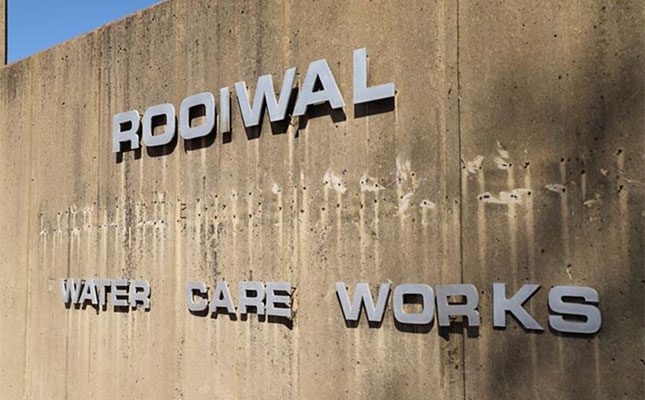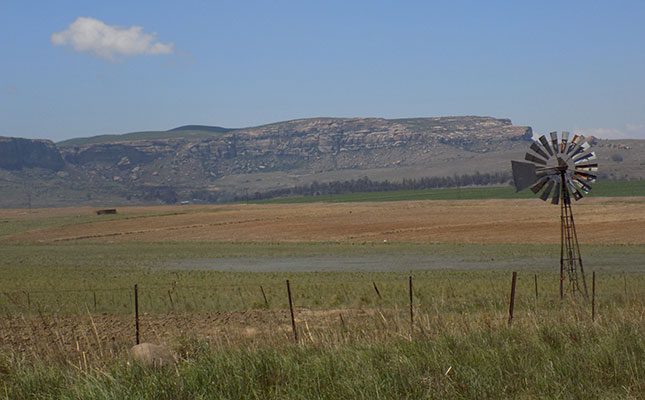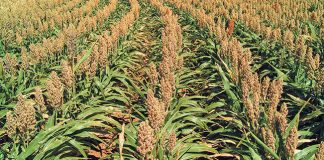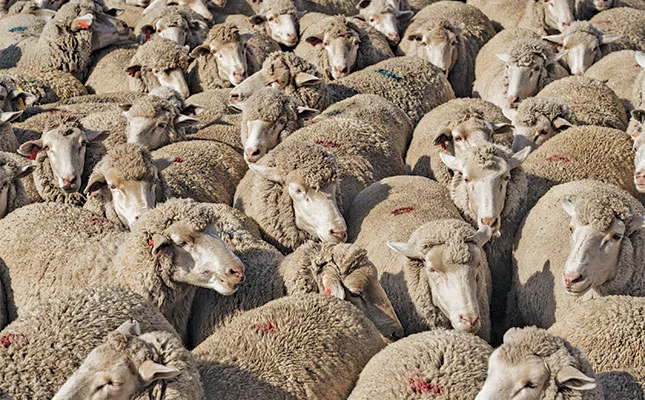
Photo: Supplied
Julius Beukes operates a mixed farming operation on the lower slopes of the Drakensberg near Ladysmith, KwaZulu-Natal. His main goal is breeding fertile sheep with lambs that grow fast and deliver a quality fleece.
Beukes is first and foremost a livestock farmer focusing on his Bessiesfontein Dohne Merino stud as well as a commercial cattle herd. The fields that he cultivates are mainly for use in his livestock operation, and he predominantly uses contractors for planting and harvesting.
While livestock farming can be profitable and plays an essential role in eco-sustainability, it will only deliver benefits to farmers who are well equipped to handle it, he says.
Beukes started his farming operation from scratch. He founded his farm with 16 ewes and built the stone kraal near the homestead in 1994 as a priority.
He mentions that two people specifically had a major impact on him as a sheep farmer. One is Walter Pretorius, who worked at BKB for many years.
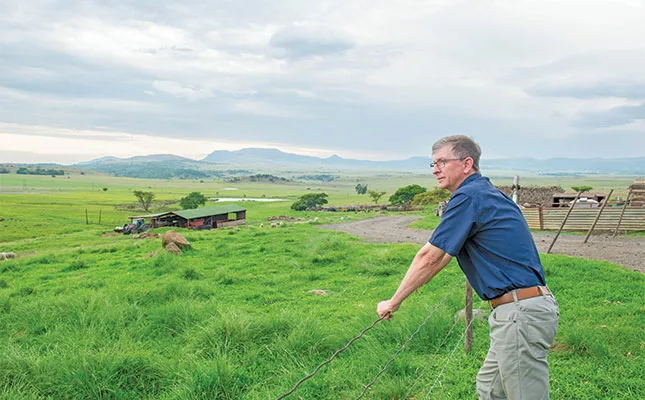
“Walter helped me with operational and financial decisions, and I was able to buy good rams with the proceeds of my wool.”
The other is Henri Londt who, as breed director of the Dohnes, “spurred me on with his wide knowledge and passion for the industry”.
Beukes adds that the breed association, research institutions and industry organisations are great resources that provide support and networking opportunities for breeders and farmers across the country.
Dohne Merino sheep are known for their high fertility and reproductive efficiency, with ewes typically producing multiple lambs per lambing season. This high fertility rate, combined with good mothering abilities, contributes to increased lambing percentages and overall productivity in breeding flocks.
Breeding strategies
In addition to breeding strategies, bloodlines are very important, Beukes explains. “One weak gene can degrade the entire stud’s reputation and nullify years of hard work.
Establishing a successful stud takes years. On the one hand, you are working with bloodlines, and on the other, you are building your own reputation.”
He stresses that without a good reputation, one cannot operate a stud successfully.
“Buyers need confidence. They want to know what they are buying, and record-keeping is therefore critical. I need to be able to back up my words with paperwork.”
Beukes says sheep breeding involves more than just reproduction. It is a science that involves strategic planning, careful selections based on data, good nutrition, and proper herd and production management.
“One has to give attention to all these elements to achieve the desired genetic traits and gains.”
He measures and compares everything on the farm, from the weight of the livestock at different stages of their life cycles to animal, meat, wool and input prices.
“I base all my decision-making on measurable facts. Better decisions are made based on these facts.”
He also aims to keep input costs as low as possible while following a strict budget.
His main goal is to breed fertile sheep with lambs that grow and wean quickly and produce excellent-quality wool.
“Breeding values play a critically important role when it comes to selecting for specific traits,” he says.
Performance testing is done on the young ewes and rams at 12 months, and samples are taken from the wool and sent to the Wool Testing Bureau in Gqeberha together with the fleece and body weights. From there, the processed data is sent to SA Studbook/Logix where the BLUP breeding values are calculated.
When it comes to managing the genetics of his flock, he relies heavily on the BLUP breeding values in stud auction catalogues to ensure the best traits are transmitted to the next generation. The visual assessment of the animal, the figures and the pedigree must complement each other before a ram is purchased for use in the stud.
Breeding values
BLUP is an acronym for ‘best linear unbiased prediction’ and is a statistical method developed in the 1950s for animal breeding. It is used to estimate the breeding values and genetic merit of a particular animal. These breeding values, Beukes explains, give an accurate indication of a specific animal’s ability to transmit its genetic traits to its progeny.
Since these values are derived from herd-based performance testing, they are comparable across studs. Estimated breeding values (EBVs) are calculated for lambs weaned, wean maternal, wean direct, body weight, clean fleece weight, fibre diameter, and general merit.
The fact that the Dohne Merino breed is evaluated across all these economically important traits makes it possible to breed profitable and adaptable animals that perform superbly in most environments.
Beukes warns, however: “BLUP is not a magic wand. It is a system based on measurements within contemporary groups and sound pedigree information. Of all the information available, breeding values will always be the most accurate information to base selection on.”
All the animal information obtained is fed into a computer. Beukes uses the Shepperd program developed by the Agricultural Research Council. With the push of a computer button, he can call up any of his animals’ information.
“You have to know where you’re going with your stud. This is important when looking at breeding values and genetic improvement. It is critically important that accurate information is used. But the accuracy of breeding values will depend on how accurately the breeder gathers and captures the data,” he says.
Deep pedigrees are a mainstay of the Bessiesfontein stud. “Stacking carefully selected, excellent sires onto top maternal lines produces superior offspring,” Beukes mentions.
He adds that it is important to look at fertility and to remember that the genetic potential for many traits, even for maternal ability, are evenly received from both parents.
“While a ram does not possess any maternal ability, it may have the potential to sire an ewe with great maternal ability. Good rams always have good mothers.”
He points out that BLUP should not be the only consideration for farmers when selecting sheep.
“Functionality of an animal is equally important. The animal should conform to breed standards, have good mobility, feed consumption and conversion, as well as fertility.”
Beukes says another aspect that should be considered when breeding or buying animals is to ensure that they will adapt to the physical environment in which they will live.
“It is vital that animals are able to adapt to the environment. They should not only survive but be able to breed and thrive.”
He places great emphasis on disease and parasite resistance criteria in his selections.
“Commercial producers want low-maintenance, hardy animals that are genetically resistant to parasites. This is where stud breeders can have a real impact through the rams they supply to the industry.”
Achieving maximum fertility
To achieve maximum fertility with the breeding programme, rams should be physically examined for reproductive fitness before breeding to detect any abnormalities that may affect reproductive ability.
“The semen quality, morphology and motility of rams selected as sires for the next generation should always be checked. In addition, screening for venereal diseases is of the utmost importance,” Beukes advises.
He says a ram’s scrotum and testicles as well as the penis and prepuce should be carefully examined, and the size and symmetry of both testicles and epididymides assessed. Both testicles should be palpated for consistency, resilience and rated reproductive capacity (RRC).
At Bessiesfontein, semen from stud rams is used for artificial insemination (AI) or laparoscopy programmes. This semen is collected on farm to ensure fresh semen for laparoscopy, or is frozen at a commercial veterinary institution for later use. Fresh semen is generally more fertile than frozen semen, but frozen semen can be stored indefinitely, Beukes explains.
After collection, the semen is assessed for contamination, volume, concentration of spermatozoa, and sperm motility.
“The preparation of ewes in the six weeks before mating and laparoscopy are very important to ensure a good lambing percentage. This means that there are more lambs to market, and that one can also better select between the replacement ewes and breeding rams. Dedicated attention to the ewe flock is critical and forms the cornerstone for a successful laparoscopy programme. You require less semen per ewe in a laparoscopy procedure as opposed to conventional AI. I can also allocate the ram of my choice to a specific ewe and so have more control over the offspring,” Beukes elaborates.
The ewes are mated in November to lamb in April. “We used to have two breeding seasons per year but have moved to a single lambing season for management and environmental reasons,” he says.
Two weeks after the laparoscopy procedure, follow-up rams are placed with the ewes in the camps to give the ewes that have not conceived from the laparoscopy another opportunity to conceive. Six weeks after the follow-up rams have been removed, the ewes are scanned for pregnancy.
“Single-sire mating groups of one ram to 35 ewes are created for follow-up after laparoscopy,” he further clarifies.
The body condition score of the ewes is extremely important, he stresses. “You want them in good condition to enable better conception. Animals that are too fat or too thin will negatively affect your conception rate.”
Ewes that do not conceive are culled for slaughter along with those who reject their lambs, do not have enough milk, or show some abnormality. The same fate befalls the rams that are rejected.
“It is not a loss, though. Because the Dohne Merino is a dual-purpose sheep, culls are shorn before being slaughtered and the chops are not to be scorned either,” says Beukes.
He gets contractors to shear the sheep twice a year. The sheep that have to undergo performance testing are sheared in March and the rest in September. The wool is marketed by BKB. The average fibre diameter (microns) of the Bessiesfontein wool clip is 17,8 microns. Each sheep produces on average between 3,5kg and 5kg of wool per year.
As a rule, the finer wool is more valuable. Wool is also biodegradable, and problems in the field include moisture penetrating the fleece and fungi growing in the wool. This negatively affects the value of a fleece. Beukes points out that there is a very fine line to breeding sheep whose wool limits dust and rain penetration, but is still fine enough to fetch a good price on the market.
“Although we breed for fine wool, we have to maintain a good balance between quality wool and animals that are adapted to the environment.”
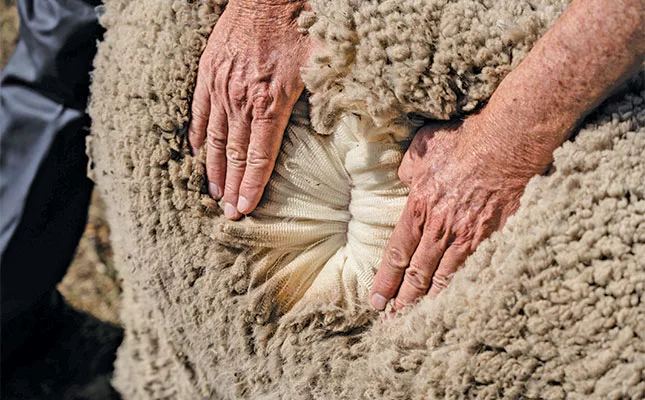
Feeding programme
A balanced diet is essential not only to meet the animals’ nutritional requirements, but also for productivity.
At Bessiesfontein, Beukes combines pasture and hay with grain and mineral supplements depending on the age, life cycle (pregnancy and lactation) and gender of the animals.
Rams are fed a supplementary feed ration that is high in natural bypass protein. This stimulates muscle development and ensures good semen production.
“Supplementary feeding of the rams can be started six weeks before breeding,” says Beukes.
Ewes are flushed with a ration that is balanced between protein and energy for 21 days before and 21 days after mating commences. They are fed a ration high in natural protein for six weeks before lambing to promote optimal foetus and udder development.
They also receive a mineral and vitamin booster at this time. Ewes confirmed in lamb with multiples are put in lambing pens and fed a complete feed for as long as they are in the pens.
The lambs have access to creep feed to ensure optimal growth. Animals destined for slaughter receive a feedlot ration or are rounded off on the veld with a production lick.
Challenges in sheep breeding and production
Predation is a major problem in the area. This is why the sheep are kraaled every night.
“It is not ideal, especially if it is raining a lot. Sheep do not like excessively wet conditions. The wetness creates a breeding ground for diseases and parasites. But theft, illegal hunting with dogs and predation leave us no other choice.”
Regarding stock theft specifically, Beukes says: “We make use of technology and strategic patrolling to try and curb theft. A good relationship with staff and neighbours is vital to combat crime in rural areas.”
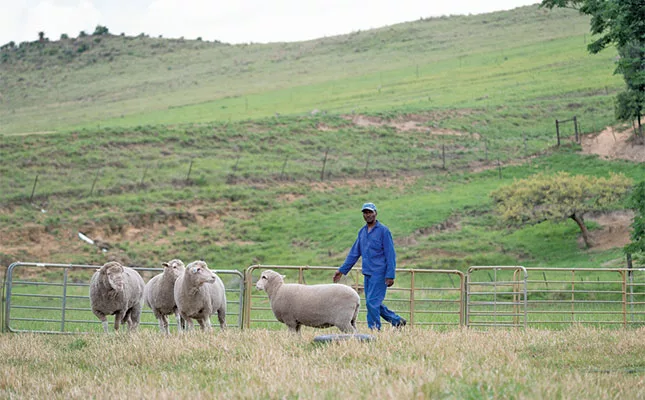
Other challenges include the volatility of the rand and exchange rates.
“Fluctuation in exchange rates and global events that impact imports and exports make budgeting for input costs challenging, but strategic forward buying helps to lessen the impact of volatility in the markets,” he says.
The exchange rate has a major influence on wool prices (wool is exchanged in US dollars).International trade agreements with South Africa influence exports, especially genetic material.
Other interests
Beukes has another love and that is his commercial cattle herd. Initially, he started farming with Drakensbergers but is now systematically switching to Bonsmaras.
“The change is simply about the colour. Red cattle are marketed more easily. Weaner calves are usually marketed at eight to nine months of age.”
The cattle are extensively farmed and marketed off the veld. In autumn after harvesting time, the cattle and sheep graze on maize stalks.
“I have no problems with volunteer maize in the next planting season. The animals, especially the sheep, pick up every kernel that has fallen on the land during harvest. In winter, I plant the fields with a cover crop. I make sure I always have live roots in the soil; this is critical to soil health.
“The cover crops are baled for supplementary feeding along with licks for the sheep. This comes in handy when the sheep are kraaled at night and helps them not to have a break in their feeding cycle,” says Beukes.
He mentions that he is lucky to have kudu, ribbok, reedbuck, oribi and duiker on the farm. There is also abundant birdlife and nothing is more enjoyable to him than looking for wildlife in the late afternoon when things are quieter on the farm, like on a Sunday afternoon.
Sharing information
Pupils from Weston Agricultural College attend the annual Dohne Merino judging course at Bessiesfontein. During these courses, they learn how to read a sales catalogue and ultimately how to select a good Dohne Merino.
Beukes believes knowledge sharing is of the utmost importance.
“Share your knowledge with young and emerging farmers. They are the future of agriculture and will carry the torch with and after us. Young farmers are also your future clients for breeding stock.”
He says that exchanging ideas with fellow commercial farmers forms a crucial part of a farmer’s learning experience. “One can learn a lot from other farmers by comparing the efficacy of your practices to theirs.”
For more information email Julius Beukes at [email protected].

